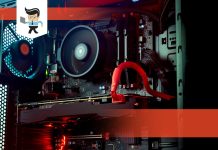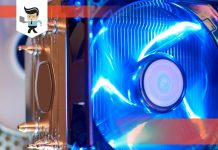PC airflow optimization serves as one of the compulsory measures that helps to ensure the longevity of the PC system, but to improve the airflow inside the PC, you should first grasp how ventilation functions within a computer case.
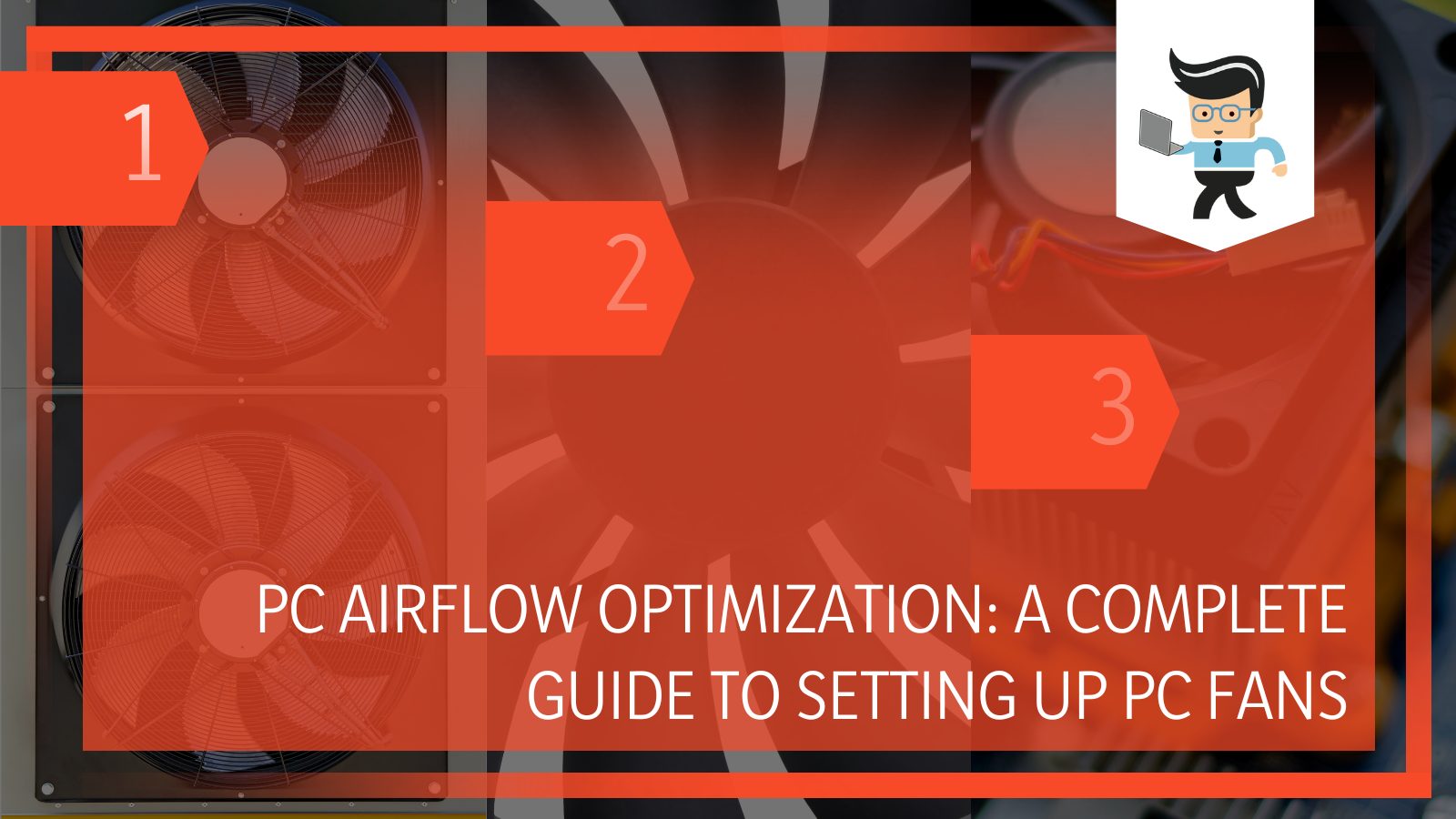 In this manner, you’ll be able to configure the CPU coolers to work in any circumstance. The difficulty is keeping it cool, silent, and tidy over time, because that’s what we should concentrate on.
In this manner, you’ll be able to configure the CPU coolers to work in any circumstance. The difficulty is keeping it cool, silent, and tidy over time, because that’s what we should concentrate on.
If you want to keep your PC well-ventilated and working in optimal conditions, keep reading this complete guide!
Contents
Best Fan Setup for PC: A Quick Guide
Planning your PC’s airflow direction, moving obstructions away to help with ventilation, adjusting fan control speeds, and keeping the air pressure balanced are some crucial steps to follow when planning the best fan setup for your PC.
Cooling fans are available from various brands. There are a few choices accessible to you. In the first place, you will want to choose fans that go with the fan mounts.
Contingent on the size of the packaging, you will have four unique choices:
- 80mm
- 120mm
- 140mm
- 200mm
In any event, mounts aren’t the only thing you should think about. The size of the fans, for example, is a crucial factor. More powerful fans will usually move in the same direction as smaller fans, but they do so at a lesser transformation.
Thus, more great fans are, for the most part, calmer than more modest ones. Something else you want to consider is the blade type. There are two choices: one that offers better static tension and the other that is streamlined for air flow.
For the most part, the last option is calmer and is excellent for installing at the front of your case. The previous pulls or moves air by applying extra power, so it’s a definitive decision if you will install fans toward the rear of your case. And afterward, you likewise need to consider whether or not you need RGB and style.
– Plan Your PC’s Fan Airflow Direction
Whenever you’ve purchased the fans for your PC, now is the right time to sort out how to enhance accuracy and plan out the air flow. There are a few significant interesting points, beginning with the heading.
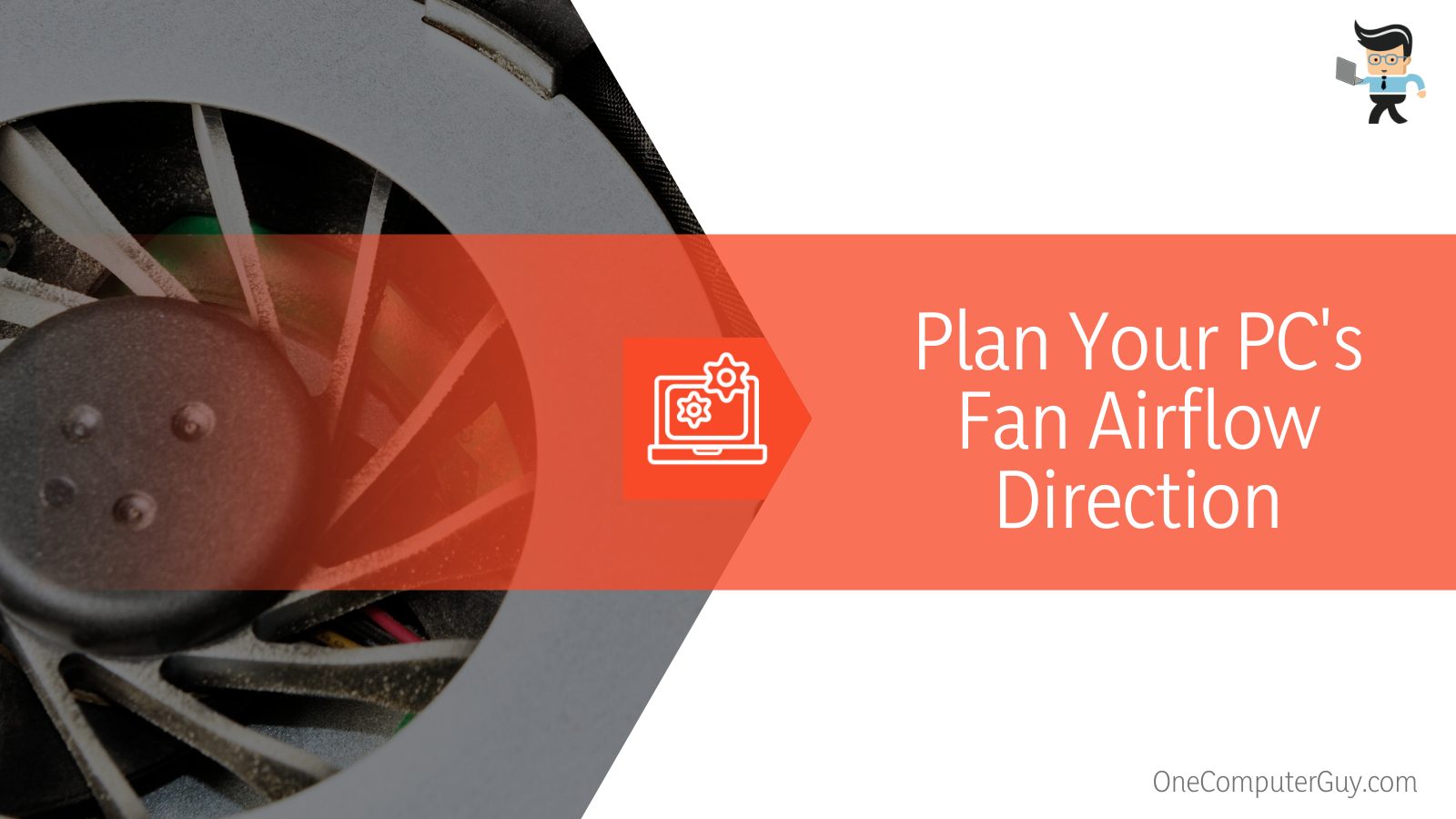 Remember that air generally moves from the open side toward the defensive fan grille. Air should constantly move from the front to the back. In this manner, in a perfect world, the open side of the fan should always be outside the situation. These are otherwise called consumption fans.
Remember that air generally moves from the open side toward the defensive fan grille. Air should constantly move from the front to the back. In this manner, in a perfect world, the open side of the fan should always be outside the situation. These are otherwise called consumption fans.
Most PC cases are intended to permit airflow from the front towards the back and from the base to the top. Thus, since the open side suckers air, you can likewise put them in the back. It will start by confronting inwards or on the top of your case permits.
– Consider Proper Ventilation for Your PC
This one should be obvious, yet it’s something many individuals will generally overlook. Your PC should be kept in a ventilated region, but not where it’ll be sitting between drafts. The fans at the back typically act as exhaust fans, flushing hot air out of the framework.
As a result, putting your computer in the corner or on a bureau won’t help. It’ll keep blowing the same heated air around, overheating the internals. In an ideal world, you’d need to keep your PC slightly elevated. This is especially true if the floor is carpeted. If you like, you can keep it on a work surface or a table at all times.
– Move Obstructions Away to Improve PC Fan Airflow Direction
Appropriate links to the executives are fundamental for upgrading the air flow in your PC. Thus, it would be best if you began from the front. Drop any checks before the fans with the goal that they can pull air neatly. Then, at that point, move within. Ensure every inside part, like your GPUs or hard drives, is mounted evenly.
Whenever you’re finished with that, the next stage is the links. In a perfect world, you’d need to use some zip connections to wrap up the links and move them far away. Now and again, there may be additional power links, so ensure you push them aside.
If your case accompanies any spacers, use them to consider more prominent, unhindered airflow within. Furthermore, to improve things, dispose of those massive HDDs. Also, change to sleeker and slimmer SSDs, all things being equal.
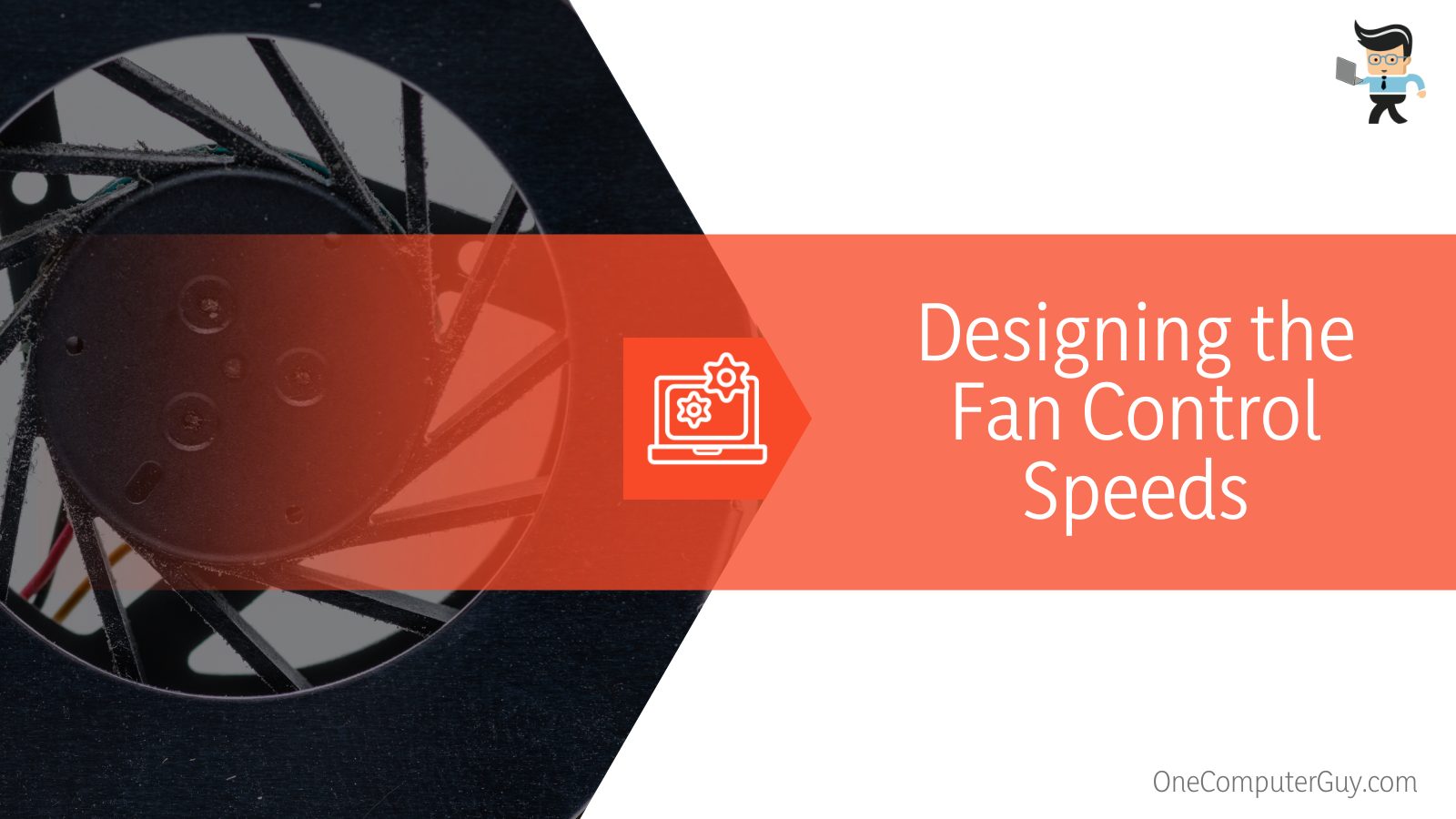 – Adjust PC Fan Control Speeds
– Adjust PC Fan Control Speeds
It’s critical to design the fan control speeds now that you’ve installed the fans and configured the internal parts to perfection. The majority of BIOS packages allow you to quickly modify the fan speed. Temperature sensors are installed inside, allowing you to determine when the fans should turn on.
-
Designing the Fan Control Speeds
There are many ways that you can control the fans. Considering you intend to set them up once and disregard them, interfacing them to a pin header is sufficient and will work. Simply interface those on your motherboard. A lot of makers offer a broad scope of items to achieve this.
Most BIOS programs support fan speed changes that empower you to change the speed bend. They also permit full robotization on the fan speed when the temperature adjusts inside the PC case. You can do this by using temperature sensors to get temperature readings.
A fan regulatory framework could be the best equipment to add to the system to make things a stride further. Every one of the fans interfaces with a module.
That likewise interfaces with your power supply. The module permits you to consider each fan’s speed. That too, because of the temperature readings from the sensors.
They are usually alluded to as PWM fan centers or just fan regulators. Some significantly offer touchscreen interfaces on an LCD. You can mount that into a 5.25-inch drive cove opening.
– Keep Air Pressure Balanced Inside Your PC
The case contains a number of components. It’s critical to adjust the airflow within. It can be difficult to transition to genuine equal air pressure. There are two options here: negative or positive airflow. The last choice suggests that your computer draws in more air. That is greater than what is being extinguished, and vice versa.
Try to keep an equilibrium or as near to it as expected. It will help to reduce dust development and keep your PC cool.
-
Positive Air Pressure
The admission fan(s) have a higher air flow pace than those of the exhaust fan(s). It implies that you have more air blown into the situation than out. Having some certain internal air pressure inside your system is worth being thankful for, but it isn’t awesome assuming that it’s excessively extreme.
A ton of air is being constrained into the case with little exhaust air flow. You can end up in a position where insufficient air development happens. These outcomes are in stale air, which can get hot from the interior parts. Also, the air up raises the internal temperature of the PC.
-
Negative Interior Air Pressure
Negative airflow implies that more air is going out than in. The exhaust fan(s) have a higher air flow rate than the admission fan(s). What’s more, we are alluding to every one of the fans inside the case as a system.
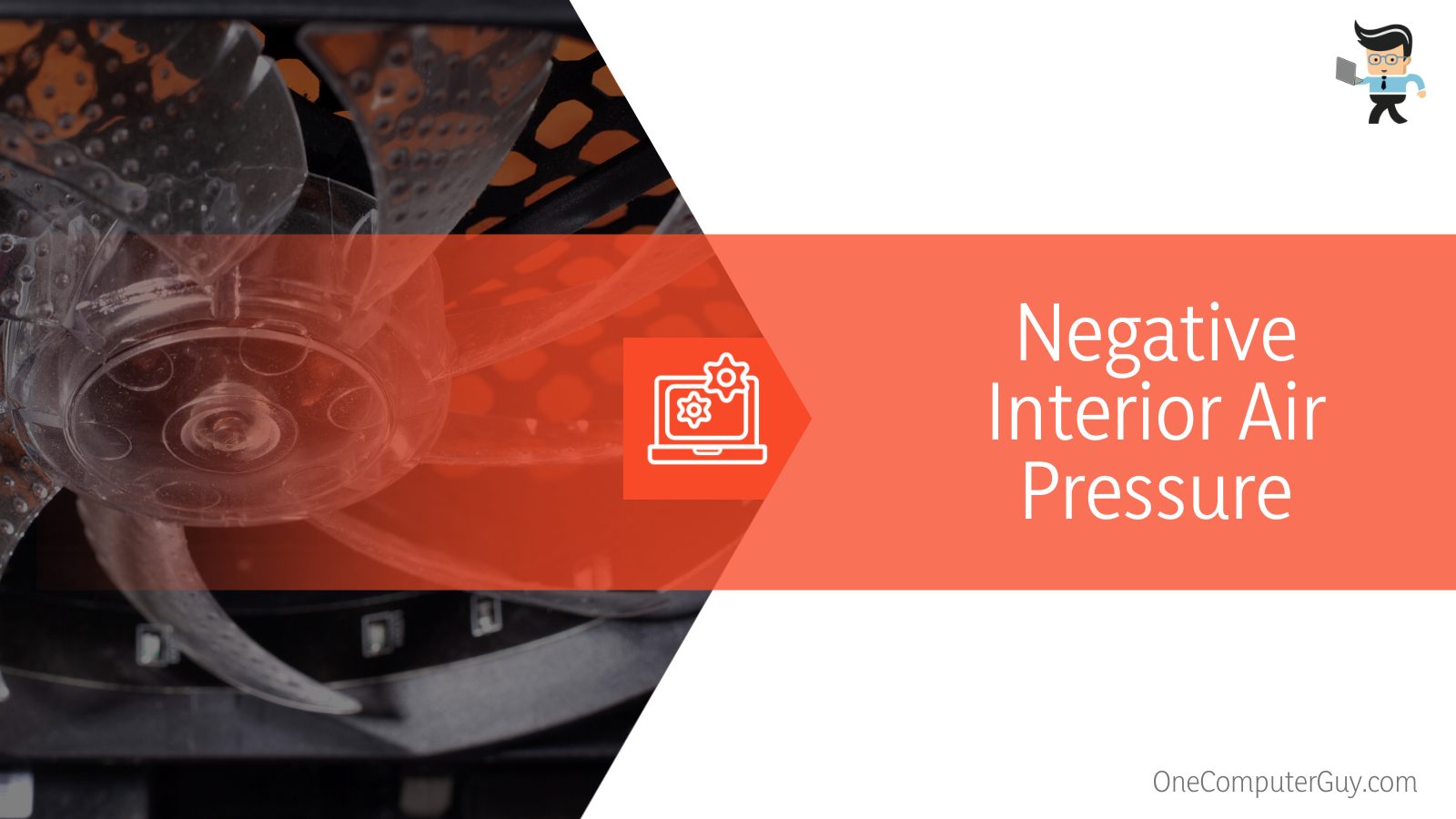 While it is a decent method for cooling your system, we don’t usually suggest it. It is likewise more challenging to add channels to the entrance that attract air through them only.
While it is a decent method for cooling your system, we don’t usually suggest it. It is likewise more challenging to add channels to the entrance that attract air through them only.
This is because air might be attracted where there is no spot to add a channel. On a few exceptional occasions, you could have what is going on where a negative airflow design won’t attract a lot of residues.
These circumstances would need to be met:
- There should be a sufficiently colossal admission region that is separated.
- The channel should have the proper pore size and thickness.
- The channel should have the correct cross-flow rate.
- The PC case can’t have such a large number of unfiltered admission regions.
- Assuming these circumstances are available, it tends to have contended that the case might stay clean for longer timeframes.
-
Marginally Inward Air Flow (more adjusted)
Positive air pressure implies that the air will be drawn from your admitted fan(s). In this way, the air is easier to channel. This is the very thing that we have viewed as the best to keep things cool and clean.
You can install a standard air channel before your admission fan(s). If your case doesn’t have one, that is to guarantee that cleaner and more residue-free air is brought into your case.
Since the air flow is more adjusted, enough air is yet depleted. Also, that implies that enough air is flowing in and out. This leaves next to no opportunity for stale air to stay nearby, about to heat up and make the interior temperature climb above wanted levels.
– Your PC’s Airflow Is Now Optimized
Because of the nice, optimum air flow, your PC should remain quiet. Regardless, it has little bearing on how successfully you protect your PC from overheating.
You should remove the cover and scrub the inside once every seven days. In any event, the residue will find a way in. If you live in a dusty climate, this is much more important to consider.
Maintaining Your Desired Airflow While Keeping Everything Quiet
The key is to attempt and install the most significant fans you can. At the same time, there are different variables to consider. Engines drive fans, and engines turning at a higher RPM (Revolutions Per Minute) can create more clamor. Similarly, the fan’s sharp edges traveling through the air remain constant.
When you use a bigger fan, you can use a more influential airflow speed at a lower RPM. This implies that fans need to turn for a part of the speed. That is contrasted with more modest ones with a similar airflow rate.
The other primary thing that assists with keeping your system cooler and calmer is the number of fans you use. A couple of extra huge fans is superior to one fan turning quicker to attempt to do legitimate cooling.
Regarding fan speed control, the fan is expected to turn on quickly. It depends on the situation and helps to keep the inner temperature of the case cool at some random temperature.
So it will just turn as quickly as required, reducing the pointless higher turning speeds. That can create more clamor and will reduce how much vibration is delivered by the fan.
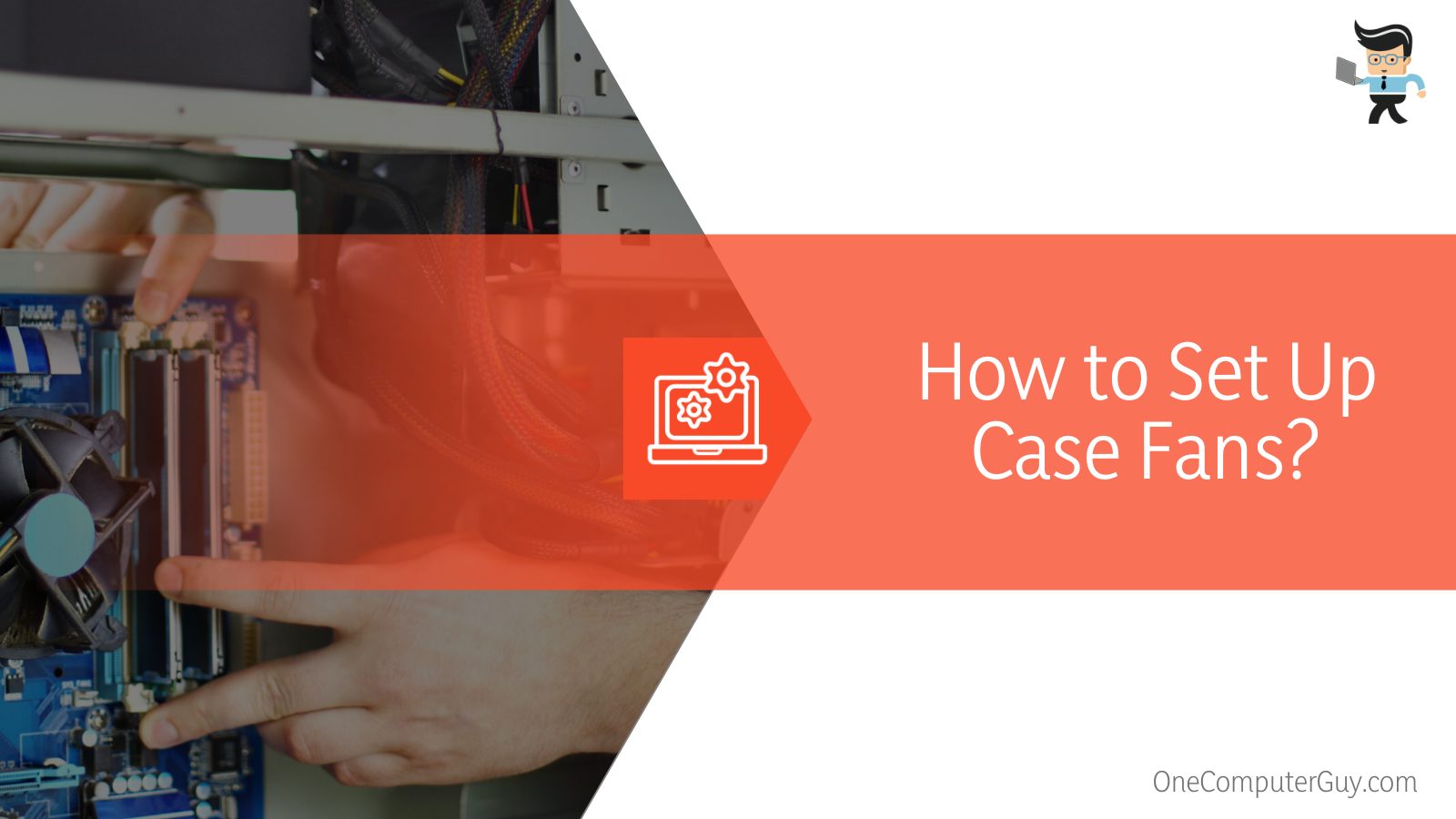 How to Set Up Case Fans?
How to Set Up Case Fans?
Using a suitable fan location and making sure you use the correct number of case fans for ventilation are essential when setting up your case fans. Here are the top ways to set up the case fans. Have a look:
– Use a Suitable Fan Location
Air should be able to go in and make its way through the case. Air ventures one way through a fan, in one side and out the other. By shifting the course, a fan is mounted, and it can go about as either an admission or an exhaust.
You should also notice the computer fan direction. It would be best to have the case fans before the case attracts air while the fans at the back blow air out.
It would be best if you used side-mounted fans for admission. If your case has a ventilation system on the top, it should be put on as an exhaust fan because hot air will rise, but they frequently don’t have air channels. To forestall dust issues, you might at any point manufacture your channels.
– Use the Correct Number of Case Fans for Ventilation
Each fan has a cubic foot per minute (CFM) rating, which proportions the volume of air it moves in a moment. The more noteworthy the CFM, the more air a fan moves.
You won’t have enough case fans to push or maneuver air into and out of the case to cool your PC adequately. More case fans imply higher absolute CFM and more air traveling through your PC.
To try not to make your PC noisy, use fewer or calmer fans. Be aware of the commotion levels, as fans can produce all kinds of buzz. Similarly, flickering multicolor lights should not be the primary component of your case fans.
The Main Types of Airflow Configurations
We will begin by investigating the three methods for designing cooling. The exhaust and intake fans are the two main types of fans. To assist you with understanding things better, here are the two sorts of fans we will allude to. These include exhaust and intake fans.
– Exhaust Fan
It qualifies as the fan having its blower side-mounted to the mass of your case. This one works by drawing the air from inside the case and blowing it outside.
– Intake Fan
The blowing side is facing within the case and draws air from outside the case and blows it inside.
Fan Size Matters
You might believe that a bigger fan is all the more significant, yet this isn’t guaranteed to be valid. The considerable component of more giant fans is that they can move a similar CFM of air as a more modest fan, yet at less RPM than the more modest fan.
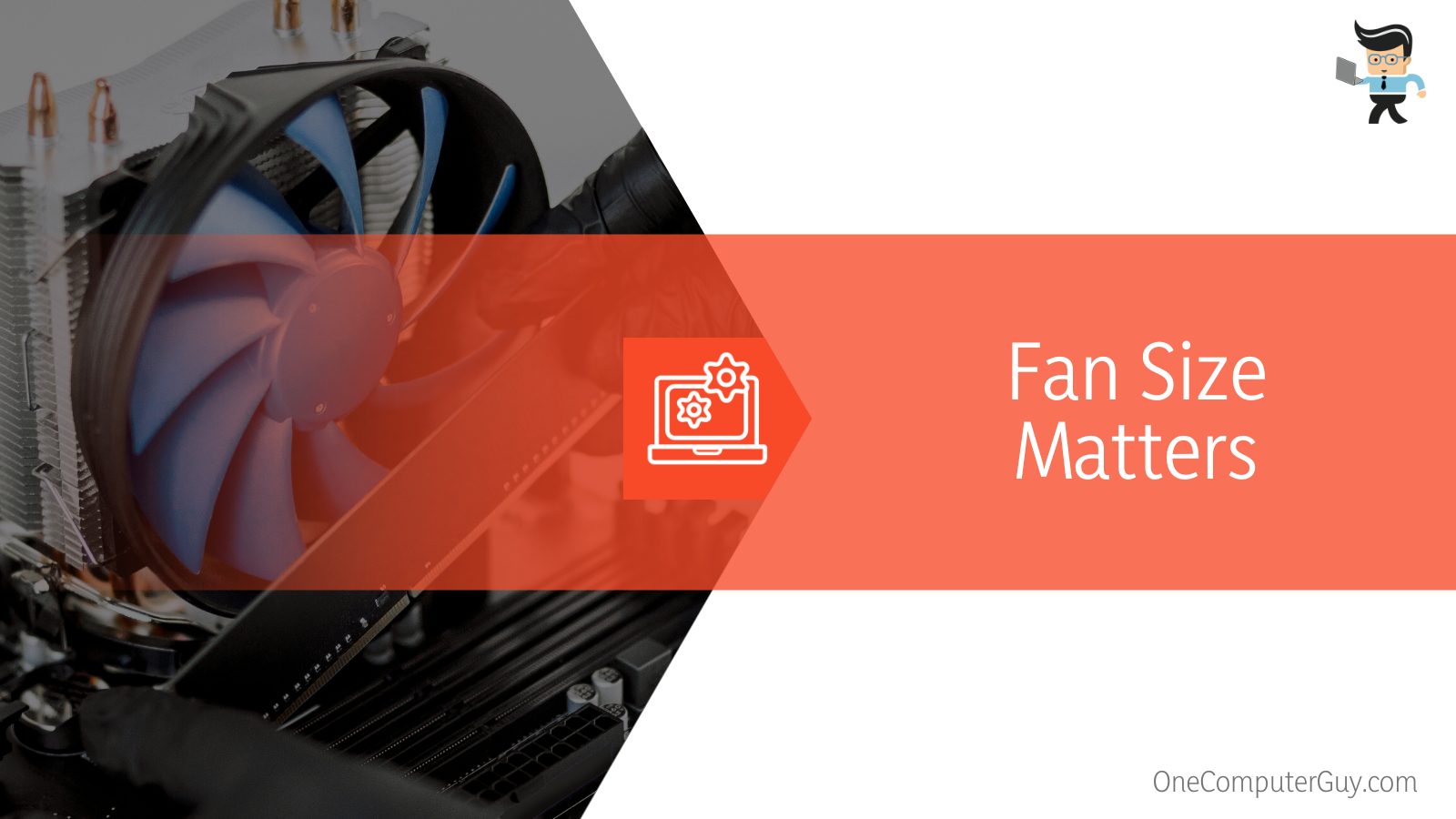 This is attractive because a fan working at a lower RPM is calmer than a fan operating at a higher RPM, so consider more giant fans being more peaceful fans.
This is attractive because a fan working at a lower RPM is calmer than a fan operating at a higher RPM, so consider more giant fans being more peaceful fans.
– Choose The Fan’s Fins Carefully
Fins are improved for one of two things: air flow or static strain. Blades streamlined for air flow are typically calmer, though balances enhanced for static tension give more power to move air. This is sometimes attractive for airflow-constrained regions. For example, enormous intensity sinks with a lot of blades.
One note about static tension advanced fans is that their advantages are broadly questioned for air-cooled frameworks. However, assuming your framework highlights water cooling, you might need to investigate them.
Conclusion
In this complete guide, we have covered all the significant aspects related to PC airflow optimization.
We discussed the most optimal fan setup for your PC, as well as the main types of airflow and what you should look for in a PC fan.
- PC airflow optimization serves as one of the mandatory steps to a well-functioning setup. It ensures the longevity of the PC system.
- We have learned about the best fan setup for PCs, and how it would be best if you planned your PC fan direction as the first step.
- It would be best to always keep your PC in a ventilated area to prevent the fans from overheating or having to work extra hard to keep the PC cool.
- There are two main types of airflow options you can choose from: exhaust and intake fans.
So now that you have learned all about how to set up case fans, it will surely help you keep your PC’s airflow well optimized! We hope you keep these tips in mind while planning your PC airflow direction.



